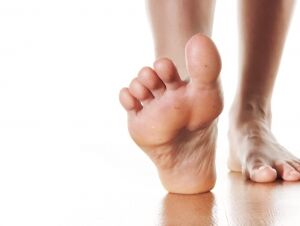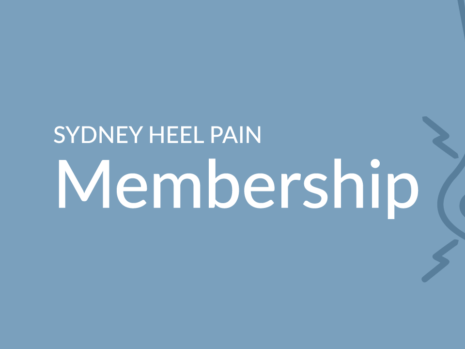Stretches for Heel Pain
Information about stretches for heel pain
If you have ever experienced pain in the heels of your feet, your sports podiatrist may have recommended some stretches for heel pain. Stretching is an important part of most prevention, treatment and rehabilitation programs for people that have suffered with foot and ankle complaints.

How are stretches for heel pain beneficial?
Performing stretches for heel pain can help to improve muscle strength and promote flexibility in the ligaments, tendons and muscles of the feet, helping to relieve the pain. Having tight muscles in your lower legs or feet can increase your risk of developing, or aggravate existing conditions such as plantar fasciitis, heel spurs, Achilles tendonitis, and another conditions that cause pain in the heel. Once the cause of the pain is determined and a diagnosis is made, the sports podiatrist will be able to prescribe appropriate stretches for heel pain.
What types of stretches for heel pain can I do?
The types of stretches for heel pain that will be appropriate for you will entirely depend on what is causing your pain. Once you have consulted with your sports podiatrist and they have made a diagnosis, they may suggest some of the following stretches:
Alphabet Stretch: This is one of the stretches for heel pain that is great to perform first thing in the morning, and then at any time of the day when you find a moment and you are seated. This stretch helps to loosen scar tissue, reduce inflammation and strengthen the muscles of your ankle and foot.
- Hang your feet over the edge of your bed, or freely off the edge of your seat.
- Imagine that your big toe is a pen, and use it to trace the letters A to Z in the air.
- Repeat for each foot.
Calf Stretch (Runner’s Stretch, Floor Stretch): Tight muscles in the feet and calves can make plantar fasciitis and Achilles tendonitis worse. This stretch helps to loosen the calf muscles to relieve the pain.
- Place your hands against a wall
- Take a step back so that you are standing about half a metre away from the wall
- Take another step back again with the leg you want to stretch, keeping the leg straight
- Keep your heel on the floor and turn your toes inwards slightly
- Bend the other leg lightly as you lean your body forwards. You should feel the stretch working down in the area of the calf belly / Achilles tendon in the back of your lower leg.
- Hold the stretch for around 15 to 30 seconds. Repeat 2 to 4 times.
If it is uncomfortable to keep your leg straight, you can begin the stretch by starting a bit closer to the wall and keeping your rear leg slightly bent.
Calf-Plantar Fascia Stretch (Seated Towel Stretch): This stretch places mechanical (external) stress on your toes, causing them to flex backwards (dorsiflexion), therefore stretching the Achilles tendon, calf muscles and plantar fascia. (can irritate / overload / prolong plantar fasciitis)
- Sit on the floor and have your legs extended outwards and your knees straight.
- Fold or roll up a towel long ways and put it around the foot you want to stretch, at about the height of your toes.
- With your hands just above your knees, hold one end of the towel in each hand.
- Using the towel, gently pull your foot back so that your foot stretches towards your body, stretching the muscles, ligaments and tendons of your lower leg and foot.
- Aim to hold the stretch for 15 to 30 seconds and repeat 2 to 4 times.
If one of your calves is tighter than the other, or you have pain in only one heel that makes it hard to properly stretch both legs at once, you can try stretching one foot at a time by placing the towel around just one foot.
Bilateral Heel Drop (Stair/Step Stretch): This stretch works on lengthening the calf muscles, which stretches the Achilles tendon and can therefore relieve pain in the heel over time, when performed correctly. (can irritate / overload / prolong plantar fasciitis)
- Start off with both of your feet on the edge of a stair or step. You should keep your balance by holding onto a handrail or another solid object.
- Keep your painful leg straight. Keeping the movement slow and controlled, let your heel drop to hang down off the step until you feel a slight stretch in the back of your calf and Achilles tendon area.
- The other leg should still be bearing some of your bodyweight.
- You should hold this stretch for 15 to 30 seconds and repeat it 2 to 4 times.
This stretch can also be performed with a slightly bent knee if it is initially more comfortable.
Seated Plantar Fascia Stretch: This exercise gently stretches the plantar fascia, relieving pressure and pain in the heel caused by plantar fasciitis. (can irritate / overload / prolong plantar fasciitis) – gentle stretches with a mild case when diagnosed early
- Sit comfortably on a chair, couch or bed.
- Lift your painful leg up and cross it over your knee, so that you are sitting with your ankle resting on the opposite knee.
- Using the hand of the same side as the painful foot, place your fingers across the base of your toes and gently pull the toes backwards toward your shin/knee until you feel a stretch across the bottom of your foot.
- Hold the stretch for 10 seconds, then take a break for 10 seconds. Repeat 10 times.
Towel Pick-Up: This is one of the stretches for heel pain / strengthening exercises that is simple and can be performed at any time of the day when you are seated. It is an effective exercise for stretching and strengthening the structures of the foot and ankle.
- Find a small towel (a hand towel works well) and place it in front of you on the floor.
- Sit comfortably on a chair that is the right height that allows you to sit with both feet flat on the floor.
- Keeping your heel on the ground, scrunch the towel between your toes and try to pick it up.
- Repeat the process 10 or so times for each foot. As your feet become stronger, you can progress the exercise by adding a weight (such as a can of beans) on top of the towel for resistance.
Are stretches for heel pain safe?
Your sports podiatrist will have had extensive experience with heel pain treatment and can educate you on what types of stretching techniques are appropriate for your individual condition. They will be able to instruct and demonstrate for you, the types of stretches for heel pain that are safe and beneficial in your situation. It is imperative to follow your sports podiatrist’s advice and stretch in a specific way, so as to not aggravate your condition.
Please be aware that the information regarding stretches for heel pain detailed in the article above is intended for informational purposes only and should not be taken as general advice. You should always consult with an appropriately qualified sports podiatrist before undertaking any exercise or stretching whilst injured or during your rehabilitation. Appointments can be made online at www.sydneyheelpain.com.au or by calling 93883322.
Written by Karl Lockett, Sports Podiatrist





